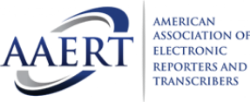How Trial Presentations Can Help Lawyers Tackle Challenging Legal Cases
The Power of Visuals in Trial Presentations for a Winning Argument
The assimilation of visuals in trial presentations has emerged as a crucial element in efficiently interacting complicated debates to jurors. By using numerous forms of visual help-- be it diagrams, pictures, or computer animations-- lawyers can enhance understanding and retention, ultimately shaping the jury's assumption of the instance.
Significance of Visuals in Trials
In many lawful settings, visuals play a crucial duty in improving the effectiveness of trial presentations. The integration of visual components can dramatically influence jurors' understanding and retention of complicated info, thus shaping their understandings and decisions. Visuals, such as charts, diagrams, and pictures, can simplify elaborate stories, making them a lot more obtainable and engaging.
Moreover, the human brain procedures visual info a lot more effectively than text, which emphasizes the significance of integrating visuals right into lawful disagreements. By converting dense lawful ideas into aesthetic formats, attorneys can facilitate clearer communication, making certain that vital points are not ignored during trials.
Furthermore, visuals serve to involve jurors on an emotional level, cultivating a connection to the instance that words alone might fall short to accomplish. The strategic usage of visuals can evoke compassion, prompting jurors to consider the human aspects of the instance.
Ultimately, the value of visuals in trials depends on their capability to improve clearness, improve juror engagement, and strengthen the narrative existing. This potent mix is necessary for crafting convincing disagreements that reverberate with jurors and affect the end result of legal proceedings.
Types of Visuals to Utilize
Effective test discussions can significantly take advantage of a range of aesthetic devices that cater to various elements of the instance. trial presentations. Utilizing diagrams and graphes can efficiently damage down complex details, making it much more digestible for jurors. Flowcharts can show the sequence of occasions, while bar charts might succinctly contrast appropriate information points.

Animations and simulations can additionally play a vital duty, particularly in instances involving technical data or elaborate situations. These visuals can dynamically stand for processes or actions, giving clarity and engagement that static pictures might not achieve.
Additionally, infographics incorporate message and visuals to sum up important information effectively. They can offer timelines, statistics, and considerable instance points in a visually attractive fashion, making it simpler for jurors to comply with the disagreement.
Enhancing Understanding and Retention

Enhancing comprehension and retention throughout test presentations is critical for guaranteeing that jurors grasp the essential aspects of an instance. Aesthetic aids offer as effective tools hereof, equating complex information into conveniently absorbable formats. By utilizing charts, diagrams, and infographics, attorneys can simplify elaborate information and highlight bottom lines that may otherwise be overlooked.
Researches have revealed that individuals retain info dramatically much better when it is offered aesthetically. This is specifically pertinent in a trial setting, where jurors may be bewildered by the quantity of proof and statement. By tactically integrating visuals, lawyers can guide jurors' interest to the most crucial facets of the case, enhancing their understanding and memory look at more info of the material presented.

Producing Involving Discussions
Captivating jurors' focus during trial discussions is crucial for communicating an engaging story. Engaging presentations take advantage of aesthetic aspects to create a remarkable experience that resonates with jurors. The critical use graphics, computer animations, and video clips can illuminate complex details, making it a lot more easily accessible and relatable.

Furthermore, integrating storytelling methods can improve involvement. Presenting proof in a sensible sequence that develops sob story permits jurors to link with the product on an individual level. Numerous discussion styles, such as incorporating brief video clips or interactive aspects, can likewise endure passion and focus throughout the test.
Eventually, an appealing presentation promotes a much more profound understanding of the situation, allowing jurors to better appreciate the debates existing and leading to an extra positive result.
Study and Success Stories
Many study highlight the significant impact of visuals in trial discussions, showing their capacity to influence juror perceptions and ultimately the results of cases. A remarkable case including an individual injury case illustrated exactly how the usage of a 3D computer animation of the crash scene made clear complex details. Jurors reported feeling more informed and compassionate, significantly swaying their check this decision in favor of the plaintiff.
In another circumstances, a corporate litigation situation used infographics to present financial information and timelines, making detailed info easily accessible. The graph enabled jurors to understand the nuances of the case more effectively than spoken descriptions alone. trial presentations. Because of this, the jury returned a verdict that went beyond the client's expectations
The engaging visuals not click here for more info just helped in producing doubt but likewise reverberated psychologically with jurors, leading to an acquittal. These success stories emphasize the necessity of integrating visuals right into trial presentations, as they boost understanding, retention, and eventually, the persuasive power of legal arguments.
Conclusion
In final thought, the critical incorporation of visuals in trial presentations significantly enhances jurors' understanding and retention of complicated information. By making use of various kinds of visuals, attorneys can effectively clarify bottom lines and foster psychological connections with the audience. Involving discussions, supported by engaging situation researches, demonstrate the extensive effect that visuals can carry convincing communication. Inevitably, the power of visuals serves as an important element in achieving desirable trial end results.